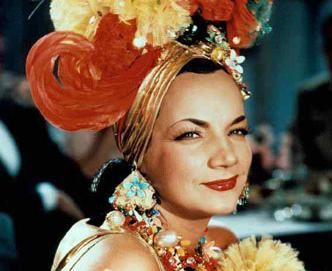Part 2 – In The Beginning
1965. Cafe Bizarre. Greenwich Village, New York City.
An unknown band takes the stage and begins to play. The electric viola weeps an unearthly, hypnotic lament, as the singer chants: “Not a ghost-bloodied country, all covered with sleep, where the black angel did weep…'”
[youtube 8joF7ezGB0U nolink]
—
Perhaps The Black Angel’s Death Song was just a little too bizarre for Cafe Bizarre. Perhaps the song’s rumored anti-communist message did no go down well in deep-red lower Manhattan. For whatever reason, The Velvet Underground are promptly fired from their first regular gig for playing the strange and dissonant tune they had been warned not to play.
But the Velvets had secured their future nonetheless: Andy Warhol was at Cafe Bizarre that night. He described the audience as “dazed and damaged” after the performance – Warhol loved it. He took them into his fold and became their manager, producer and sponsor. He helped them secure their first record contract; he painted the cover for the first album, The Velvet Underground & Nico.
It is (too) often said that, while their first record sold only a hundred copies, everyone who bought it started a band. Like most apocrypha, this is exaggeration which nonetheless contains a large truth, which is this – compared to their minimal chart success, The Velvets had a disproportionate impact on the sonic landscape of America. They single-handedly gave birth to what we call alternative rock, of which Goth is very much a subspecies. And The Black Angel’s Death Song may itself be the first piece of modern Goth.
Decades later, Iggy Pop would recall the effect The Velvets had had on him in the mid 1960’s. He was especially inspired by vocalist Lou Reed, who had once been a house song-writer for Pickwick Records: “Hey, he (Reed) can’t sing,” Iggy thought; “I can’t sing. Let’s all sing!” (I paraphrase here from memory an interview seen long ago.)
In Detroit on Halloween night 1967, Iggy debuted his band The Stooges. The performance, like all Stooges performances, was a slash and burn musical onslaught (more slash than burn – Iggy would make a name for himself by self mutilating on stage). In 1969, The Stooges recorded their first record – produced by The Velvet’s classically-trained violist John Cale. Like The Velvets, The Stooges would sell little, but inspire legions.
Meanwhile, back in New York, two teenagers in the sleepy suburb of Forest Hills, Queens had formed a garage band in 1966. Over the next eight years, this band would undergo many line-up and name changes. By 1974, they had decided on a monochrome look of jeans, t-shirts, and leather jackets, and settled on the nom de guerre The Ramones. Punk was born.
Musically, The Ramones were a throwback to pop from the 60’s – more Beach Boys than Velvet Underground. But their style was raw and visceral, and their delivery brutal – one, two, three, four and then a towering electric wave would wash over the audiences of Max’s Kansas City and CBGB in lower Manhattan, where The Ramones quickly ensconced and took residence.
Inspired by The Ramones (though they always took pains to deny it), across the pond, Johnny Rotten began to lead his merry band of anarchists to incandescent glory as The Sex Pistols in 1975. The Pistols made punk harder, more angry – they spat on audiences and each other. They terrorized journalists who dared interview them.
Nevertheless, The Pistols quickly garnered a small but devoted following, the core of which was known as the Bronby Contingent. Among them was a girl called Siouxie Sioux, and her friend, bass player Steven Severin.
There were other portents floating in the musical firmament in these years. David Bowie was riding to rock glory on the backs of Martian spiders; Alice Cooper was bringing horror show Vaudeville to Metal. A two-man combo called Suicide combined drum machines and primitive sythns with lyrical homages to ghosts and motorcycles, creating a template that would be copied over and over in the years to come.
All of these things combined and congealed, bubbling sometimes under the surface, sometimes simmering just on top, until 1976 when, like Frankenstein’s monster, a not-so-pretty amalgam of disparate limbs would finally take its first steps.
Alive! they cried, and called it Goth…
Next Time: 1976 – The Big Bang
Suggested Listening:
1) The Black Angel’s Death Song – The Velvet Underground
2) Venus In Furs – The Velvet Underground
3) 1969 – The Stooges
4) Judy Is A Punk – The Ramones
5) Anarchy In the U.K. – The Sex Pistols
6) Ghost Rider – Suicide
7) Keep Your Dreams – Suicide
8) Ziggy Stardust – David Bowie
9) The Black Angel’s Death Song – Vitamin String Quartet
(Author’s note: Look for the entire iMix of “The Vault: An Exploration of the Gothic – Part 2” in iTunes)
Part one of this series can be read here.

COMMENTS
Please let us know if you're having issues with commenting.